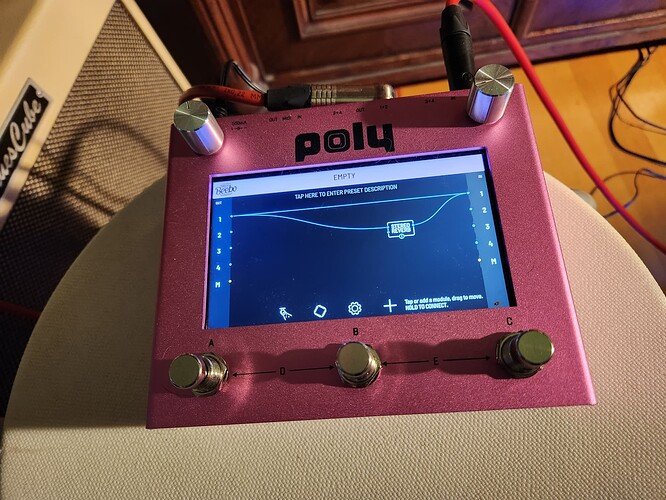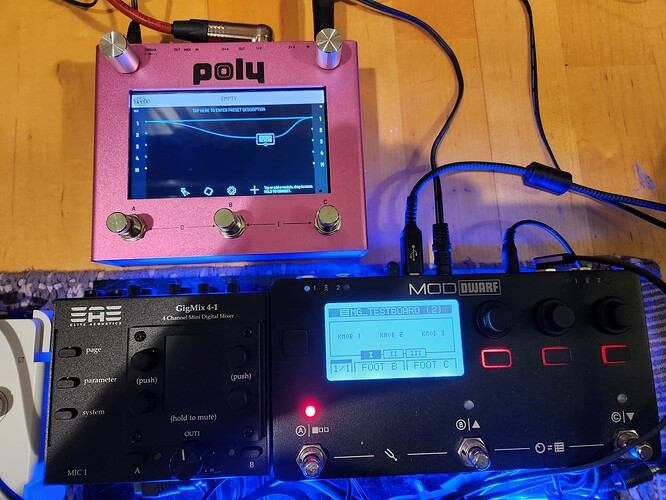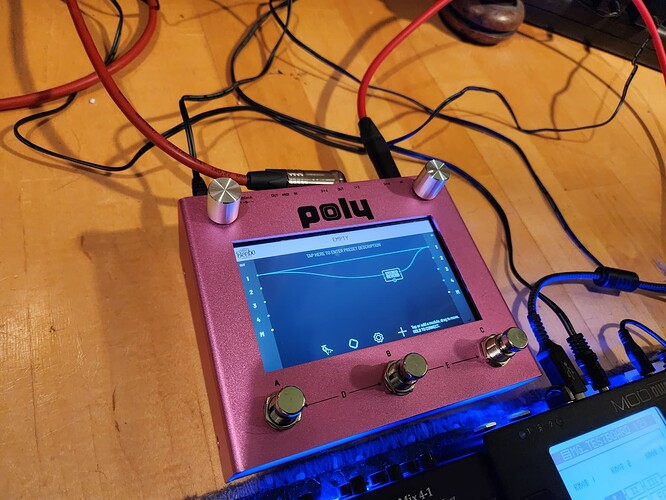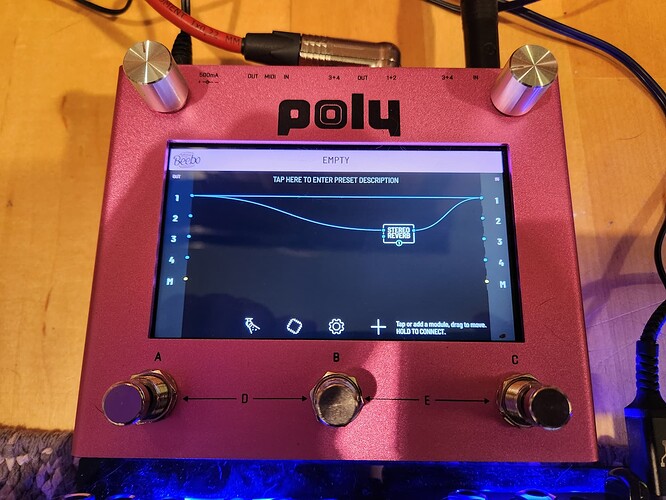I had the wonderful opportunity to check out Poly Effects’ Beebo, a pedal with a similar yet very different concept to the Dwarf. I would like to offer you a brief comparison of the two pedals and my opinion. This is my personal meaning, I am not an official tester of Gear or something conparable ![]()
First, the hardware: Both devices are road-ready, would I say. I must say, however, that the Dwarf seems much more robust. The Beebo also has a metal chassis, but it doesn’t have the monolithic character of the Dwarf. Perhaps this is because the Beebo consists of two housing parts that are screwed together. The rotary knobs and foot switches feel slightly wobbly on the Beebo and the sound is hollow, which doesn’t exactly suggest solidity either. But it’s okay. I had to pull the rotary knobs out a little bit first because they were dragging on the case with a nasty noise… hum.
I of course ordered the pink Beebo… if you’re going for it, then go for it… that looks cool, of course, if you like it… ![]() The Dwarf, on the other hand, is kept in a serious but also somewhat boring black.
The Dwarf, on the other hand, is kept in a serious but also somewhat boring black.
To cut a long story short: I like the Dwarf’s hardware a lot more, it seems much more robust.
The concept of the two devices appears similar at first glance, but they could not be further apart. The effects of Beebo are selected from a list, similar to the Dwarf, and then wired together in the main screen. But that’s about it for the similarity. The concept reminds me more of a Headrush or other deveices that have a touchscreen. Then this is the biggest difference to the Dwarf: You work with the Beebo exclusively in the screen of the pedal itself, but with the Dwarf in the browser on the PC.
This has advantages and disadvantages, of course: With the Dwarf, I need a PC to build my pedal boards, but not with the Beebo. However, I sit comfortably on my chair and work on a large, clear screen when I operate the Dwarf, but with the Beebo I fumble on a small screen with back-pain and try with my clumsy fingers to always hit the right button. Don’t get me wrong: Both have something. However, I much prefer working on the large screen.
But now to the most important topic: the sound and the plug-ins:
If you look into the Beebo plug-ins as a Dwarf user, you will meet some familiar plugins again: Many reverbs for example but also other plugins that I use in Dwarf (e.g. the whole Convolution set) I also find in Beebo. But that makes a huge difference for me: In the Dwarf I can tweak the sounds, in the Beebo this is often not possible. There, the tweakability is replaced by a variety of different reverbs. Maybe I did something wrong here, but if so, the usability needs to be improved again. I haven’t figured out how to change the parameters in a way comparable to the Dwarf. This was the biggest weakness of the Beebo for me. A second serious drawback was the latancy: with some plugins, this was so large that you could hear it loosely. Maybe it was not a bug but a feature, but then this was not written anywhere.
Where the Beebo has clear strengths: Gain staging. This is not a comparable problem, as for the Dwarf, at least I have not perceived anything like that… So it doesn’t happen what sometimes happens with the Dwarf; You take a plugin into the pedalboard and all of a sudden everything is only half as loud or it’s way too loud and noises miserably. Here, the Dwarf has a clear weakness, which must be better communicated or worked on.
But now comes something surprising: The Beebo also has a problem with background noise. In the meantime, I know my way around the Dwarf so well that I have managed to suppress the noise completely, meanwhile even with the original power supply. I did not succeed with the Beebo. It may be that I needed more experience, but for a system with proper gain-staging, as it is the Beebo, I would have liked less noise.
The sound of the plugins is excellent on both devices (if you use the Dwarf correctly). However, I must also say that I sometimes watch comparisons on YouTube and am always amazed at how different some sounds are supposed to be according to the tester and I hardly hear any difference. Maybe they should make more music instead of paying attention to per mille in the sound design…
You notice with the Beebo that the manufacturing company has a lot to do with synthesizers, because many effects / plugins / methods come rather from this corner. The selection is somewhat different than in the Dwarf, there is also a lot of crazy stuff, but I personally rather not use.
My personal conclusion: When I operated the Dwarf for the first time, I was immediately thrilled. The first pedalboards still had decent background noise, but it was clear to me that the device will fully meet my needs when I get a little familiar with it. I didn’t feel that way about the Beebo. I was rather annoyed after a while: this fiddling with the small screen, the latency of some plugins, the background noise… already the fact that I had to pull the knobs out a bit so they wouldn’t drag on the case… Somehow the Beebo is not my device. I had the idea that you could do cool things with Dwarf and Beebo in combination. I have to say, better two Dwarfs then.



